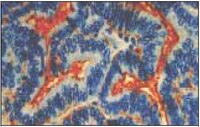CA1004 Sigma-AldrichAnti-CA 125 Mouse mAb (OC 125)
Anti-CA 125, mouse monoclonal, clone OC125, recognizes the CA125 in non-mucinous epithelial ovarian carcinoma and uterine myoma. It is validated for WB, ICC, IP, and for frozen and paraffin sections.
More>> Anti-CA 125, mouse monoclonal, clone OC125, recognizes the CA125 in non-mucinous epithelial ovarian carcinoma and uterine myoma. It is validated for WB, ICC, IP, and for frozen and paraffin sections. Less<<Synonyms: Anti-Cancer Antigen 125
Recommended Products
Overview
| Replacement Information |
|---|
Key Spec Table
| Species Reactivity | Host | Antibody Type |
|---|---|---|
| H | M | Monoclonal Antibody |
| References | |
|---|---|
| References | Hogdall, E.V., et al. 2002. APMIS 110, 545. Deng, X., et al. 2000. Gynecol. Oncol. 79, 416. Jeyarajah, A.R., et al. 1999. Gynecol. Oncol. 73, 242. |
| Physicochemical Information |
|---|
| Dimensions |
|---|
| Materials Information |
|---|
| Toxicological Information |
|---|
| Safety Information according to GHS |
|---|
| Safety Information |
|---|
| Product Usage Statements |
|---|
| Packaging Information |
|---|
| Transport Information |
|---|
| Supplemental Information |
|---|
| Specifications |
|---|
| Global Trade Item Number | |
|---|---|
| Catalogue Number | GTIN |
| CA1004 | 0 |
Documentation
Anti-CA 125 Mouse mAb (OC 125) Certificates of Analysis
| Title | Lot Number |
|---|---|
| CA1004 |
References
| Reference overview |
|---|
| Hogdall, E.V., et al. 2002. APMIS 110, 545. Deng, X., et al. 2000. Gynecol. Oncol. 79, 416. Jeyarajah, A.R., et al. 1999. Gynecol. Oncol. 73, 242. |








